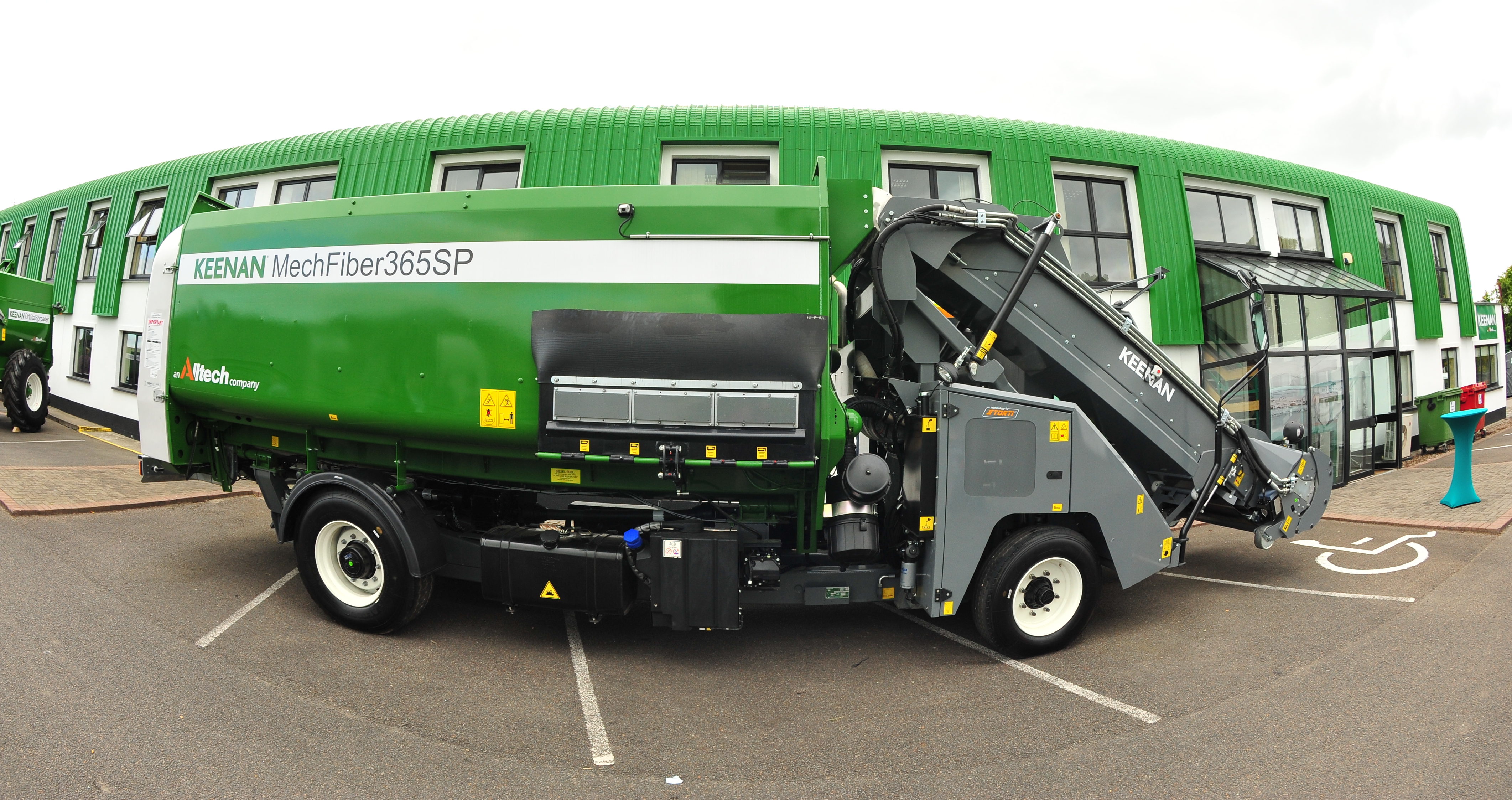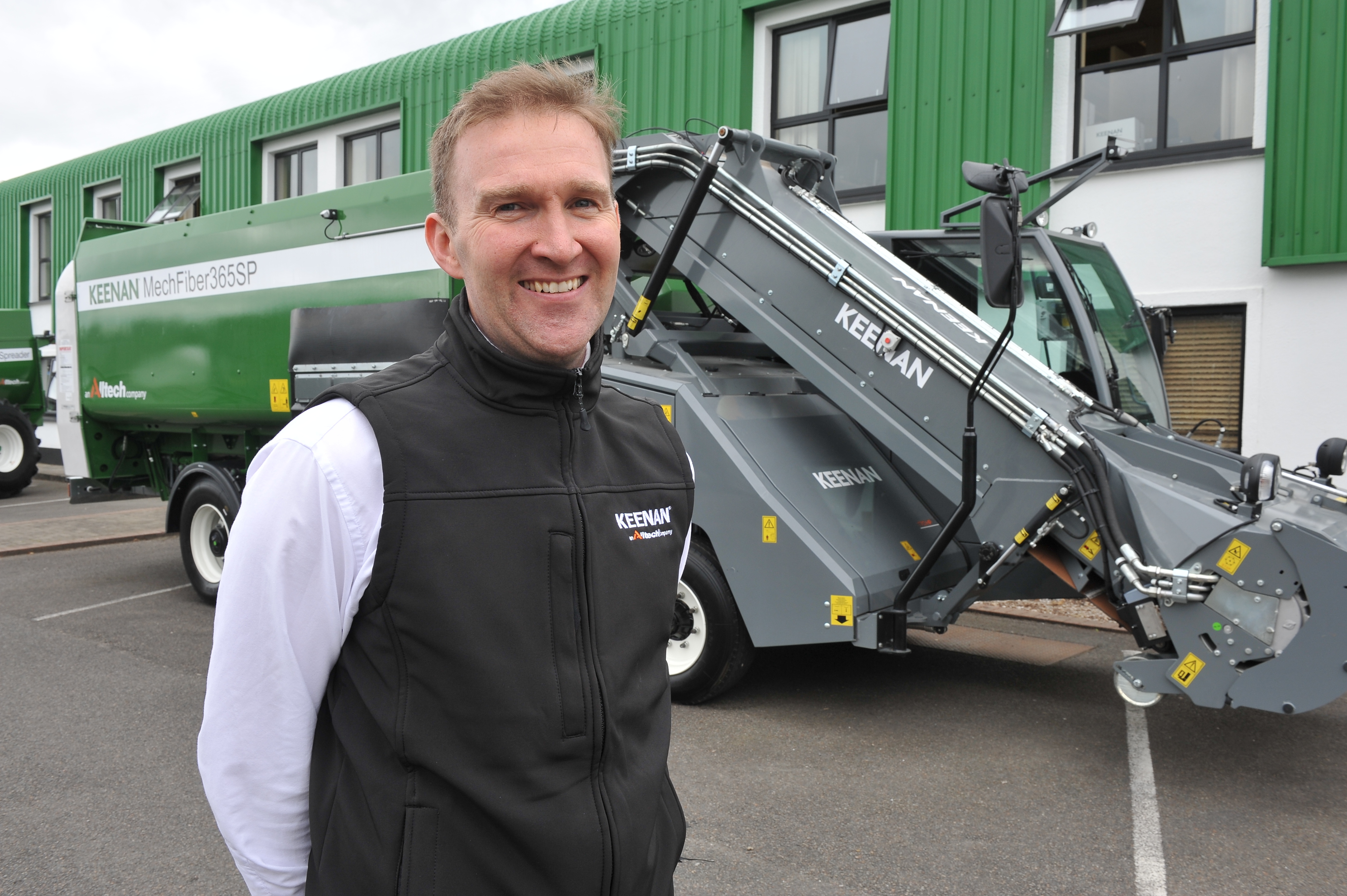Keenan – based in Borris, Co. Carlow – opened the gates of its production facility to more than 240 Irish dairy and beef farmers earlier this week.
The event featured the full range of Keenan mixer wagons, with capacities ranging from 10m³ up to 28m³, and the recently launched MechFiber365SP – a self-propelled machine.
However, one of the biggest draws on the day was the “exclusive” sale of new and used mixer wagons; the demand for which was driven primarily by dairy and beef farmers looking for solutions for the coming winter.
In the run up to the event and during the day, the company sold 25 machines to farmers throughout the country. Keenan also has “a lot of further enquiries to follow up over the coming week” from farms that will require a farm visit to get a better understanding of their system and to prepare a profitability proposal for the farm.
Although some of the company’s bigger machines were on show, it was the ‘Keenan Approved’ range that kept the sales team busy on the day; machines varying in value from €5,000 to €20,000 were available to purchase.
Commenting on the demand for machines, Keenan Ireland sales manager Cathal Gibbons said: “There was a lot of enquiries from both dairy and beef farmers on diet feeders on the day, with a lot of interest in our InTouch feed management service.
“Fodder reserves were exhausted on farms last spring and supplies continue to remain tight, so many grass-based dairy farmers are looking at the role a Keenan feeder, along with Alltech feeding solutions, can play on their farm.
“As farms are getting tightly stocked, there is more of a demand for conserved feed; this is proving more difficult to source due to weather and other factors.
“Farmers are looking at different options to avert feed shortages. Labour is becoming a limiting factor and so, Keenan diet feeders and the nutritional solutions we offer are being seen as answers to these issues.
“Highly-stocked dairy farmers are realising that they can reduce the quantity of silage they need to make, as the Keenan machine reduces feed wastage in the trough and increases utilisation within the cow. It also allows the flexibility of silage to be replaced with straw or other feedstuffs.
“While grass needs to be maximised in the cow’s diet, farms are also looking for cost-effective ways to supplement their cows at grass when it is in short supply. More and more farmers, and it’s been quite clear over the last number of days and weeks, are looking at the Keenan as a method of meeting this challenge.
“We have machines that are capable of meeting every farmer’s specifications and budget. If we take the Keenan Approved range for example, we have feeders available from €5,000 up to €20,000,” he said.
Machines on show
As part of the open day, the company showcased some of its Keenan Approved range alongside some of the newer models available.
Click on a thumbnail in the gallery (below) to open up a full-size image; once opened you can scroll sideways to see the next picture. Refer to each caption to see details of each machine.
- This Keenan Approved MechFiber360 has been shot-blasted and painted. It has also been relined and fitted with a heavy-duty top knife and additional heavy-duty body blades
- Manufactured in 2011, this Keenan Approved MechFiber350 has undergone a major face-lift. The six-paddle mixer boasts a heavy-duty top knife and additional heavy-duty body blades
- With a 16-cubic-metre capacity, this Keenan Approved MechFiber340 is ready for work
- The pictured Keenan Approved MechFiber320 – with a 14-cubic-metre capacity – was subject to ‘a lot of interest on the day’
- This 14-cubic-metre, six-paddle, machine is fitted with a heavy-duty top knife and additional body blades
- Driven by a simple two-chain system, this new Keenan MechFiber350 has the capacity to feed 100 cows when laden
- Taking just 90hp to drive, this new MechFiber345 boasts an enlarged mixing chamber and an oil-bath driveline
- Taking a closer look at a MechFiber365. The machine fits into the ‘medium-sized’ category and needs at least 110hp to do its best work
- Keenan also showcased a model from its Orbital Spreader range
Prepare a feed budget
Speaking at one of the seminars organised on the day, Cathal Bohane – head of nutrition at Keenan – said: “This is an ideal time for farmers to prepare a feed budget.
“First-cut silage is probably in the pit and now we can measure to see what we are starting with first and foremost.
“You have to be able to prepare for the worst and you should have a month or two of extra silage to get you through the winter.
“When you complete your feed budget, you will know whether you have a surplus or a deficit and there are a number of actions that you can take. One of the simplest ones is to actually purchase feed,” he said.
For farmers that are short of forage, Cathal noted that there are several options available.
Farmers who are short of 100t of silage are very much focusing on the forages that they can get on-farm. If they’re short of less than 100t, they can look at the alternatives that are out there.
“The simple option is to buy more grass silage; but there’s also maize, whole crop, fodder beet and moist feeds available.”
When it comes to the costs associated with sourcing alternative feedstuffs, Cathal encouraged farmers to focus on the cost per tonne of dry matter (€/t).
“Don’t be totally focused on buying grass silage. At €30/bale, it’s probably costing €180/t of dry matter and maize or whole crop may come in significantly cheaper than that.
“If you’re trying to chase milk solids or finish cattle faster, maize, whole crop or beet will offer a little bit more there,” he noted.












